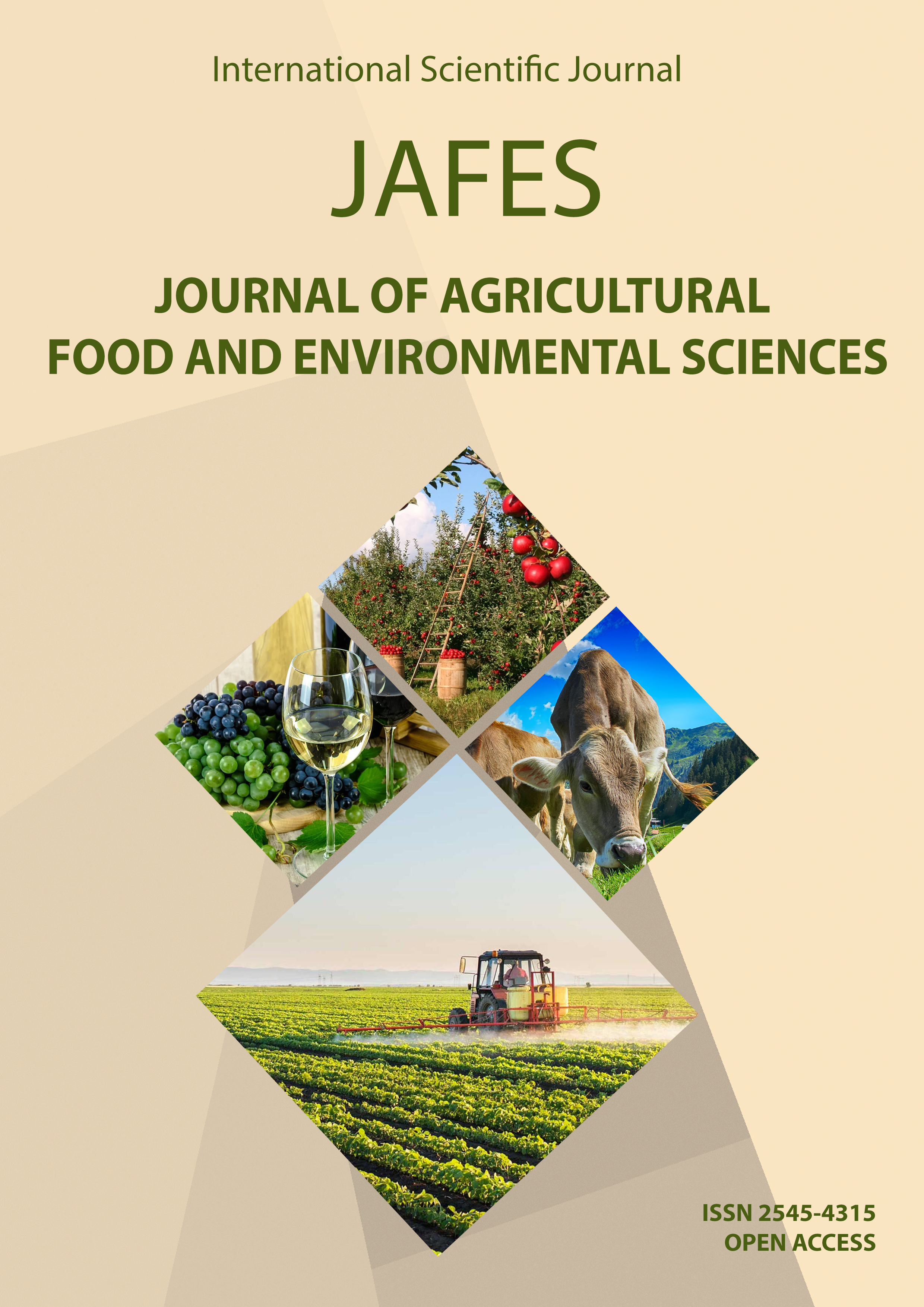CONTROL EFFICACY OF A NOVEL SUCCINATE DEHYDROGENASE INHIBITOR FUNGICIDE, PENTHIOPYRAD, AGAINST BOTRYTIS CINEREA
Клучни зборови:
Botrytis cinerea, fenhexamid, fungicide resistance, penthiopyradАпстракт
The goal of this experiment was to study the efficiency of the novel active ingredient penthiopyrad (Fontelis SC) in controlling of gray mold disease in tomato (Botrytis cinerea), a very destructive disease in our country. As a standard, the well-known active ingredient fenhexamid (Teldor) was used. The experiment was conducted during 2019 in two production regions of tomato in North Macedonia, Bogdanci and Dojran. In the untreated variant in the region of Dojran, a very high level of disease severity (73.2% in the old leaves, 84.8% on the stem) was observed, leading to destructive damages in the tomato production. In the region of Bogdanci, significantly lower level of disease severity was observed in the untreated variant (14% on the leaves, 9.2% on the stem). The tested novel fungicide Fontelis SC demonstrated high level of efficacy. In the region of Dojran, the fungicide Fontelis SC provided efficacy degree of 81.9 to 100%, showing significantly better results than the standard Teldor (29.5-86.6%). In the region of Bogdanci, the new fungicide Fontelis SC proved again to be more effective than the standard Teldor. Fontelis SC demonstrated maximum efficacy of 100% on all plant parts, while for the standard Teldor efficacy performance ranged from 86.9% to 88.5%. These results emphasize the need in expanding the range of novel fungicides, in order to provide better results in gray mold disease management.



